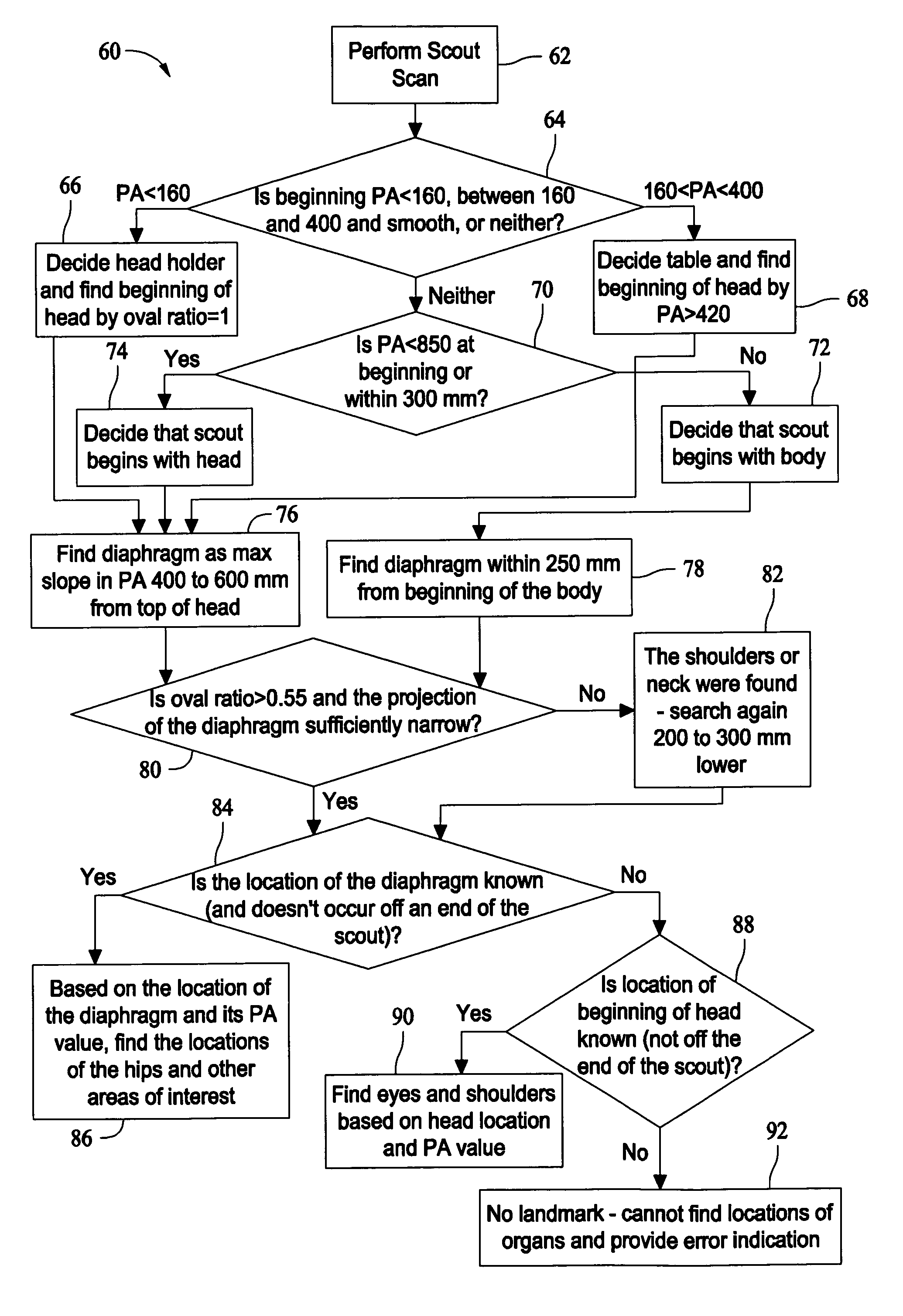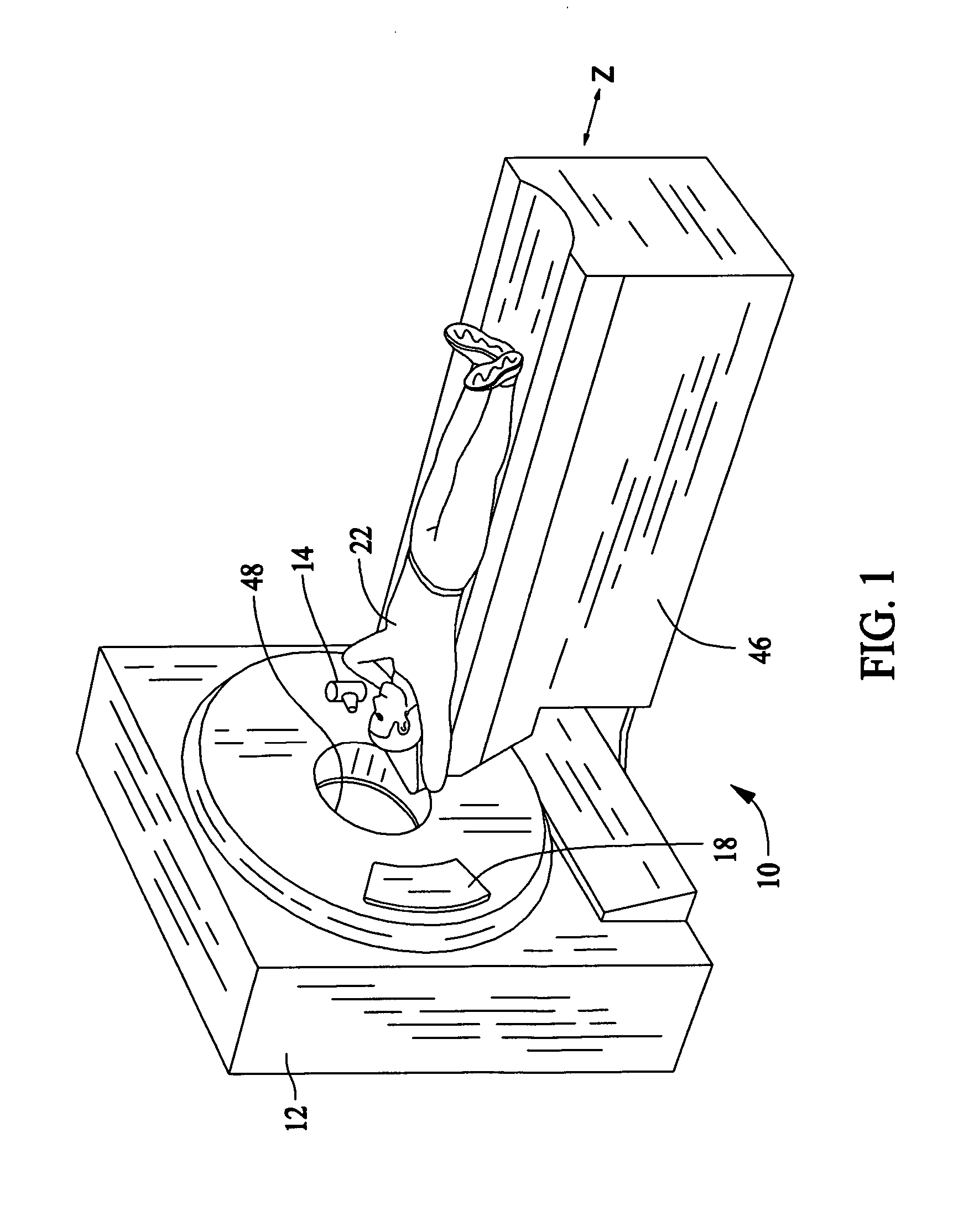Method and system for automatically determining regions in a scanned object
a technology of automatically determining regions and scanned objects, applied in the field of imaging, can solve the problems of increasing errors, reducing scanning throughput, and time-consuming and complex process of marking locations on scout images
- Summary
- Abstract
- Description
- Claims
- Application Information
AI Technical Summary
Problems solved by technology
Method used
Image
Examples
Embodiment Construction
[0015]FIG. 1 is a perspective view of an exemplary imaging system 10. FIG. 2 is a schematic block diagram of the imaging system 10 (shown in FIG. 1). In an exemplary embodiment, the imaging system 10 is a single modality imaging system, for example, a computed tomography (CT) system. However, it should be understood that the various embodiments may be implemented in connection with imaging systems having more than one imaging modality (i.e., multi-modality imaging systems). Additionally, although the various embodiments may be described in connection with a particular imaging modality, for example, CT imaging, different imaging modalities both medical and non-medical may be used, for example, Positron Emission Tomography (PET), and in general any type of x-ray or nuclear imaging.
[0016]Referring now specifically to FIGS. 1 and 2, a computed tomography (CT) imaging system 10 is shown that includes a gantry 12 for a CT scanner. The gantry 12 includes an x-ray source 14 that projects a ...
PUM
 Login to View More
Login to View More Abstract
Description
Claims
Application Information
 Login to View More
Login to View More - R&D
- Intellectual Property
- Life Sciences
- Materials
- Tech Scout
- Unparalleled Data Quality
- Higher Quality Content
- 60% Fewer Hallucinations
Browse by: Latest US Patents, China's latest patents, Technical Efficacy Thesaurus, Application Domain, Technology Topic, Popular Technical Reports.
© 2025 PatSnap. All rights reserved.Legal|Privacy policy|Modern Slavery Act Transparency Statement|Sitemap|About US| Contact US: help@patsnap.com



